"Cityscape" is a very broad term that most of the time refers not only to a certain place, but also to a place we have experienced, are familiar with and have left deep memories. It may be obvious to everyone, or it may be a secret that only you know.
Memories are raging, and the authors are calm, sincere, and honest. We hope to take you on a journey through each of the interesting and extraordinary cityscapes in our "City Walk Guide" series.
Since I left home in college, I have traveled and lived in many cities over the years. One of my very common observations is that northern cities have a more angular, rougher feel than southern cities, with wider roads, square buildings and cleaner lines. Later, when I went to Europe, this feeling was definitely amplified, and in the case of the cities in northeastern Germany, there is a difference between them and the cities in southern Germany, which can be strongly felt just by walking on the streets.
Beijing, being a northern megalopolis, gives me even more of an impression. The roads are wide, so wide that you may have to jog to get through an intersection before the light turns red; the buildings are rough, not to mention the small balconies, and even the dormer windows can't be recessed into the whole building to maintain the squareness of the building. In this way, the city of Beijing looks like an "uncle with a Chinese character face", usually unsmiling, always upright, always serious.
But even in such a big city, there are some small streets and alleys that are romantic, that is, the old city of Beijing, surrounded by the jungle of steel. In the old city, there are some city life that is generally hard to reach for outsiders, such as the life in the hutongs; there is also life that is rarely touched (or not bothered to touch) even in old Beijing, such as the imperial city ruins like the Forbidden City, which is always crowded with visitors.
As an expat living in Beijing (at least I think so myself), the only invitation I wouldn't turn down after living in Beijing for almost four years was to go to the hutongs and wander through the spring, summer, autumn and winter.
 A view of Beijing's hutongs if you are interested in the history of the city
A view of Beijing's hutongs if you are interested in the history of the city
One of the things that fascinates me about hutongs is that their names have been handed down for some historical reason, which allows you to feel the flow of history when you are in them.
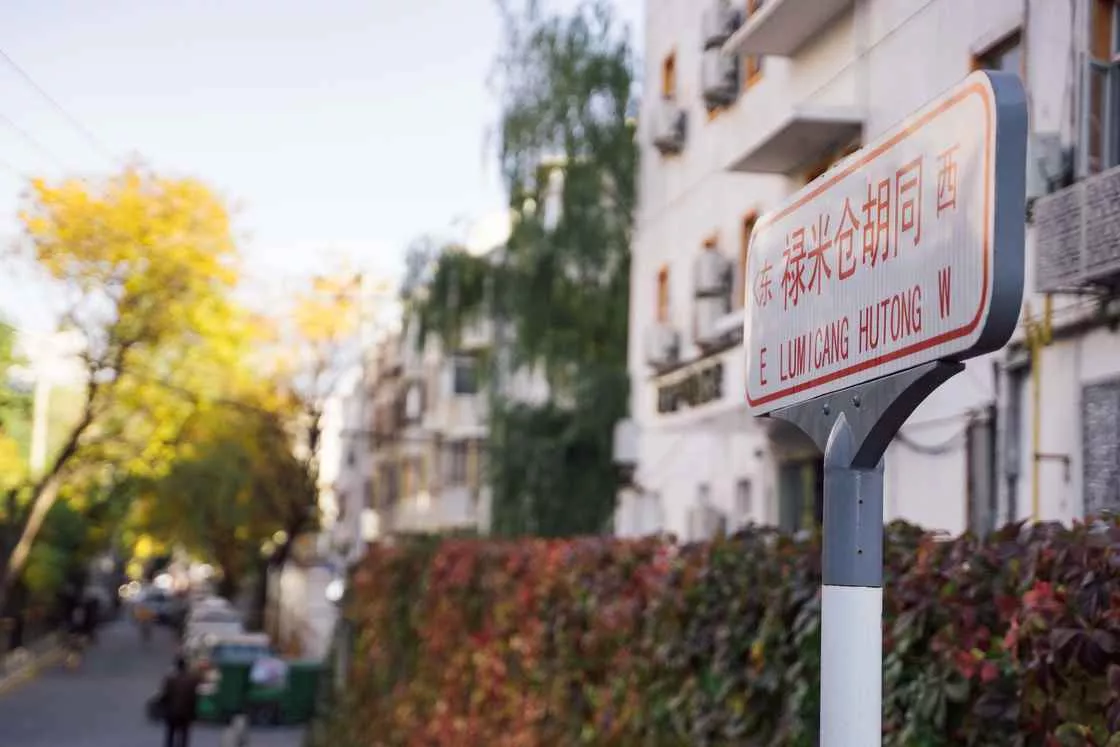 Rumicang Hutong Rumicang Hutong is located in the southeastern part of Beijing's Dongcheng District and, as the name implies, was the place where official rice was stored during the Ming and Qing dynasties. If you visit this hutong now, you will find it has been occupied by the Institute of Munitions and Equipment. This is the current state of affairs, but I'm sure it will be part of the history of this hutong in the future, just as I stand in the hutong today and imagine how official rice was distributed in the past.
Rumicang Hutong Rumicang Hutong is located in the southeastern part of Beijing's Dongcheng District and, as the name implies, was the place where official rice was stored during the Ming and Qing dynasties. If you visit this hutong now, you will find it has been occupied by the Institute of Munitions and Equipment. This is the current state of affairs, but I'm sure it will be part of the history of this hutong in the future, just as I stand in the hutong today and imagine how official rice was distributed in the past.
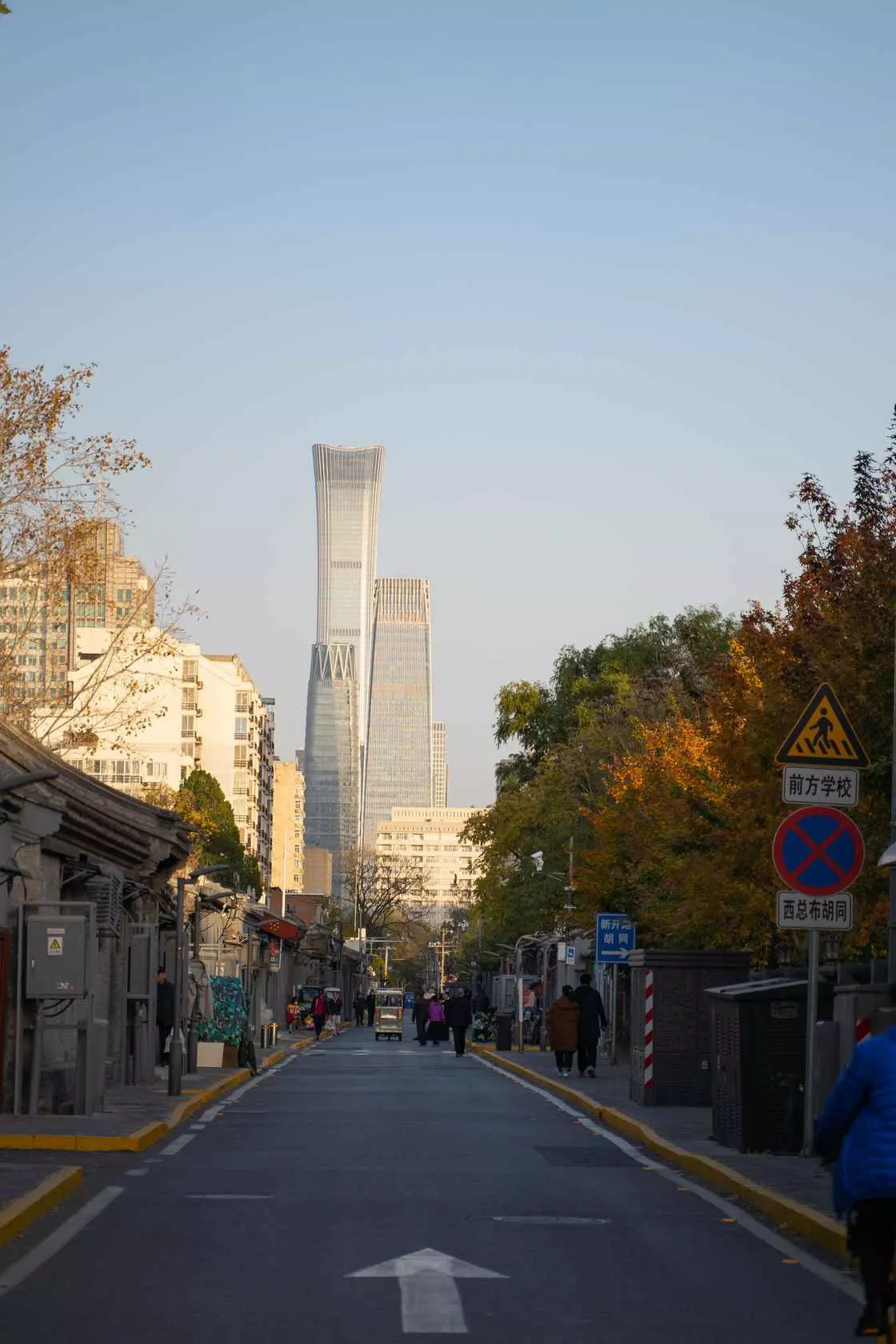 西总布胡同,非長焦镜头拍从禄米仓胡同西出出,往西南方向就走到西总布胡同。
西总布胡同,非長焦镜头拍从禄米仓胡同西出出,往西南方向就走到西总布胡同。
The West General Cloth Hutong, called General Cloth Hutong in the Ming Dynasty, belongs to Ming Shi Fang and was named because the General Cloth Office was located here. In the Qing Dynasty, it was called Headquarters Hutong, which belonged to the Panbai Banner, and in the Xuan Tong Dynasty, it was divided into East and West General Cloth Hutong, with Chaoyangmen South Small Street as the boundary.
Whatever the history of this hutong, it is now a street known to photographers as a direct link to Beijing's CBD, and if you happen to have a telephoto lens with you, you can use the sense of compression to show the clash of modern and traditional Beijing. Of course, the Xizhangbu Hutong is also a great place to go at night, but it's better if you "eat" it on a non-hazy day.
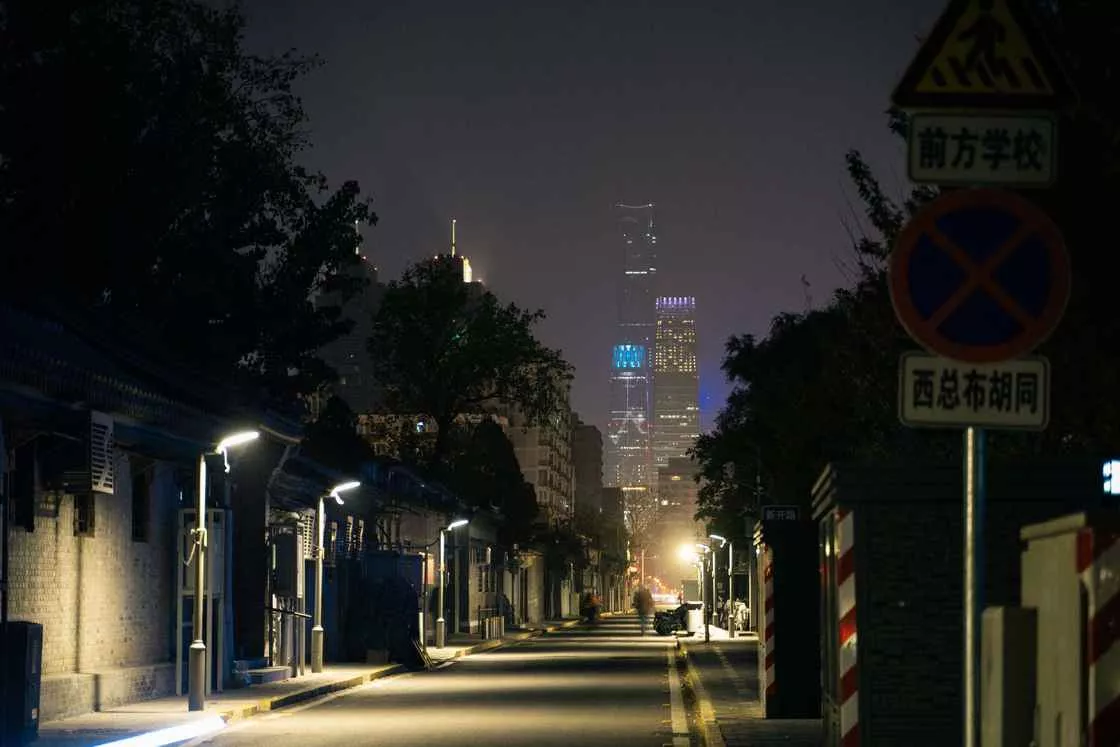 Night view of Xizhoubu Hutong if you are interested in city life
Night view of Xizhoubu Hutong if you are interested in city life
Every city has more or less its own flavour of the city, and the streets and alleys of Beijing's old city are certainly the best places to experience such a life.
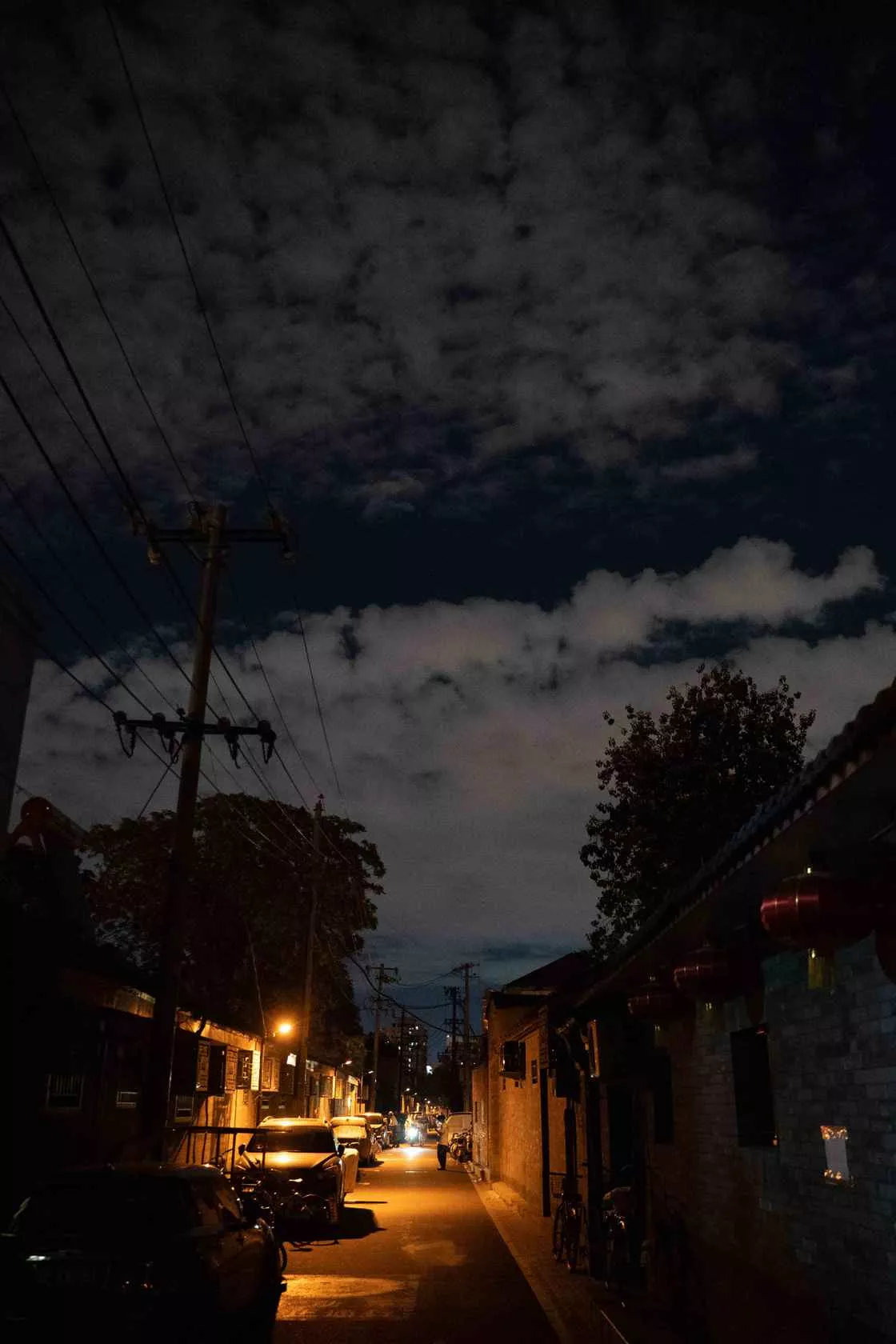 Nanyang Hutong Night ViewIn streets like this, you can appreciate the wisdom of many working people. For example, how exactly do cars park in the hutongs? You can also feel the warmth of Beijing's oldest man, who, when you are looking for a public bathroom with a bewildered face, asks you a question on his own: well seven ah?
Nanyang Hutong Night ViewIn streets like this, you can appreciate the wisdom of many working people. For example, how exactly do cars park in the hutongs? You can also feel the warmth of Beijing's oldest man, who, when you are looking for a public bathroom with a bewildered face, asks you a question on his own: well seven ah?
In the fast-paced life of Beijing, Hutong seems like a place where time has been deliberately slowed down, where the streets are narrow and people are so close to each other that any old man or woman on the side of the road can talk to you for a while. There is nothing to worry about here except "I forgot to turn off the fire at home".
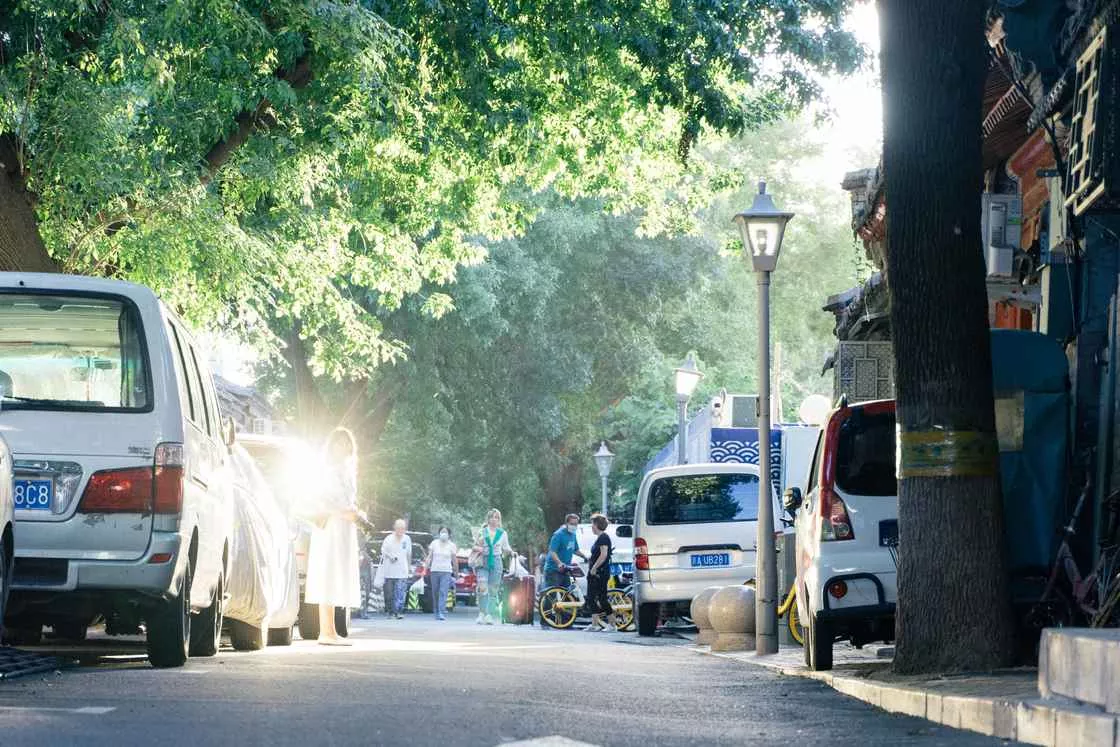 南阳胡同午後阳光I don't know if it's because I grew up in the north, but playing shuttlecock seems to be one of the few recreational activities that I can remember fondly from my student days. One of the few recreational activities that I can remember from my school days was seeing the residents of the neighborhood exercising by playing shuttlecock in the square of the Drum Tower, which created a great sense of affinity for me and I couldn't participate in it right away.
南阳胡同午後阳光I don't know if it's because I grew up in the north, but playing shuttlecock seems to be one of the few recreational activities that I can remember fondly from my student days. One of the few recreational activities that I can remember from my school days was seeing the residents of the neighborhood exercising by playing shuttlecock in the square of the Drum Tower, which created a great sense of affinity for me and I couldn't participate in it right away.
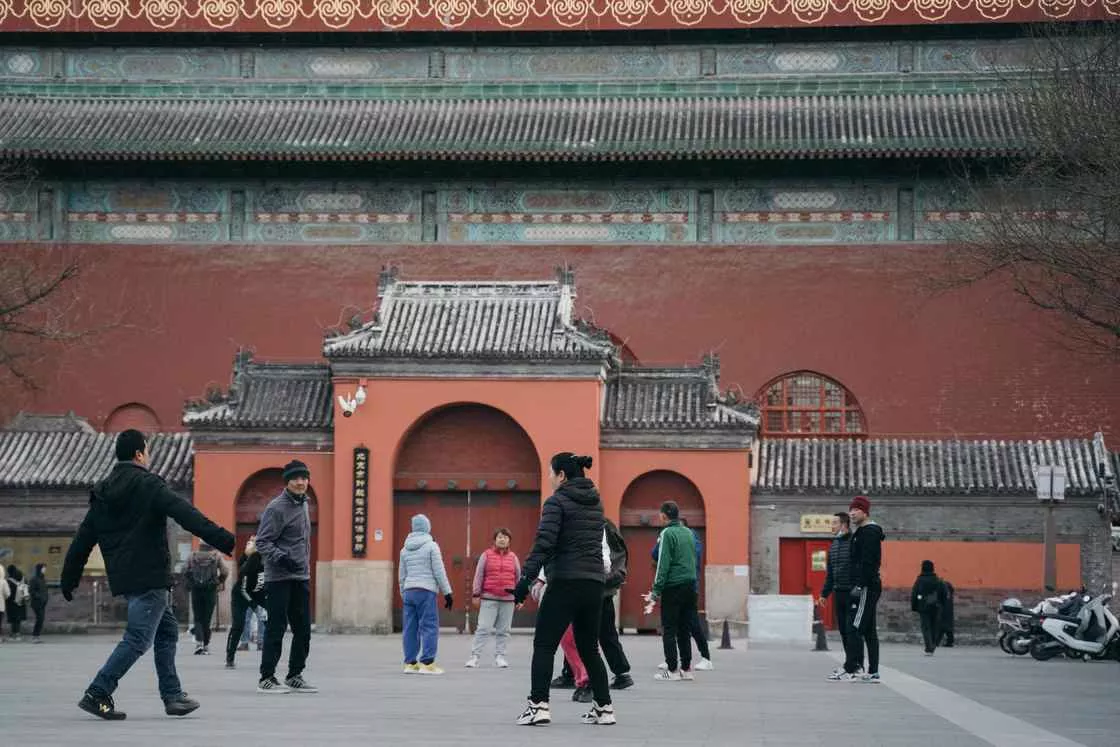 The traditional activity skateboard in Drum Tower Square can appear in this scene is also a bit "East meets West".
The traditional activity skateboard in Drum Tower Square can appear in this scene is also a bit "East meets West".
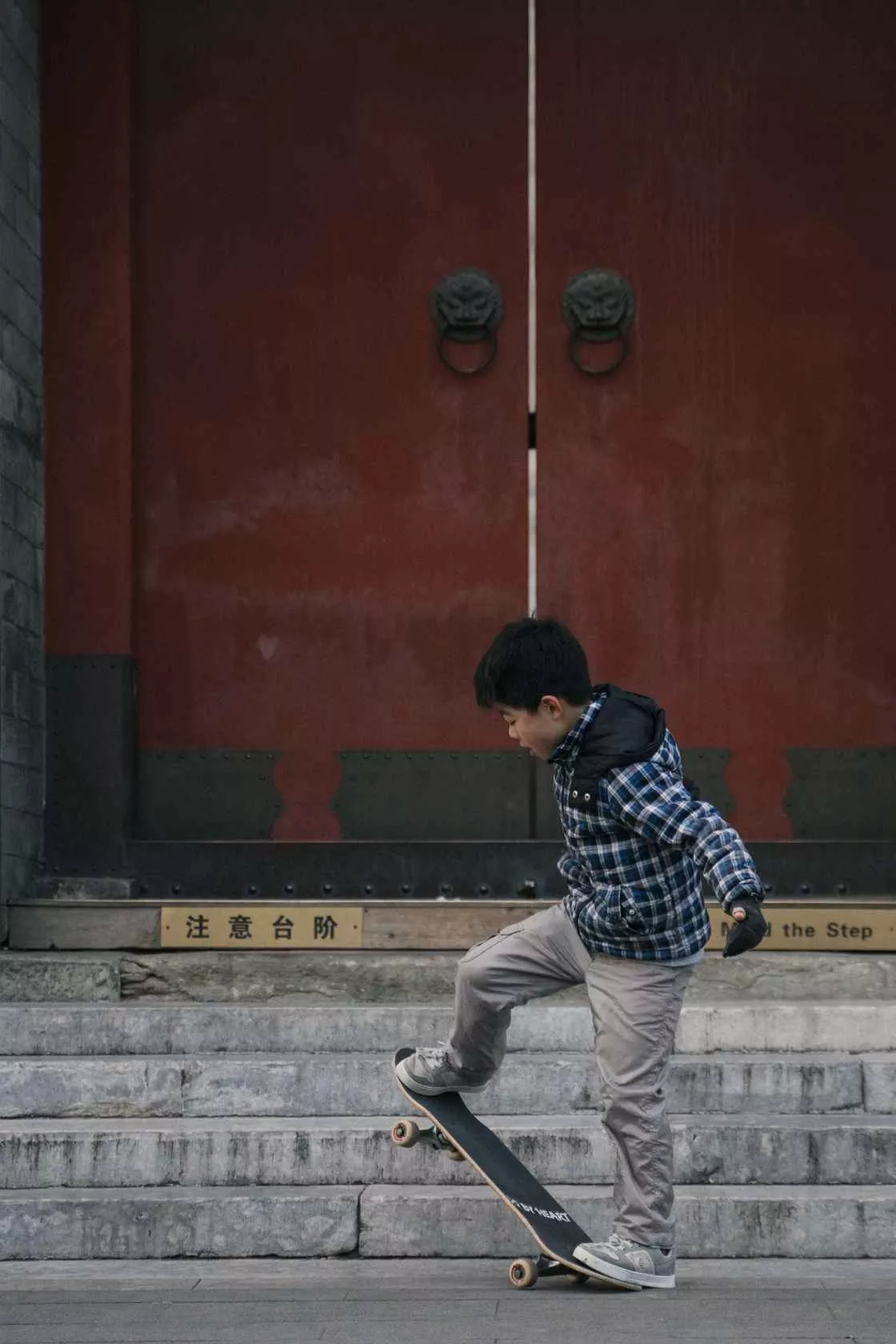 Skateboarding teenagers in front of the big red door if you are interested in photography
Skateboarding teenagers in front of the big red door if you are interested in photography
Under this category of cityscape photography, Paul Wanxiang is actually relatively speaking, with humanities, architecture, landscapes and so on. In Beijing, the lone share is probably the brightly colored red walls and old buildings in the center of the inner city.
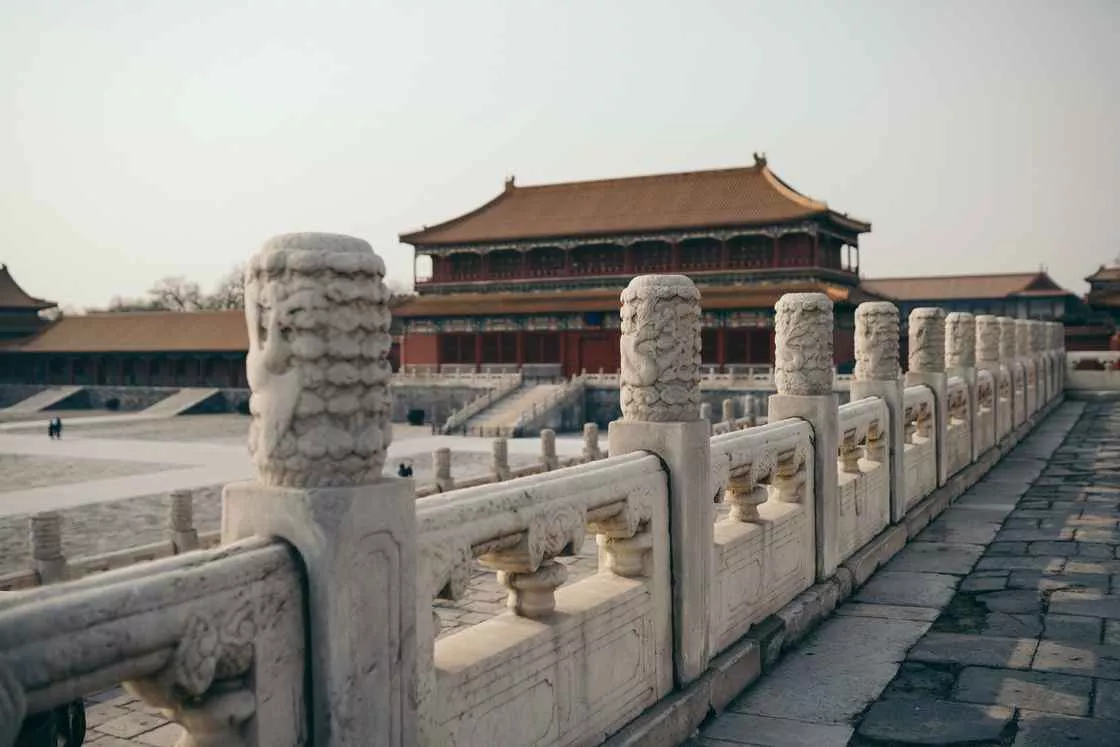 A corner of the Forbidden City in BeijingThe Forbidden City, located on the central axis of Beijing, can be considered the center of the center of Beijing. The deep palace walls and red walls and white bricks inside attract countless people to visit every year. The scenery of the Forbidden City can be said to have its own unique beauty in every season, and you can even follow the flowering season to photograph the various flowers, begonias, wisteria and lilacs reflected in the red walls. However, my favorite part of the Forbidden City is the autumn and winter. Autumn because of the plants and the colors, and winter because of the snow. I remember that the most existential moment of the year in the Forbidden City is the first snowfall in Beijing. Autumn in Beiping belongs to the hutongs, then the first snow in Beiping definitely belongs to the Forbidden City. The snowy sky with the red walls and the solemnity of the palace will make people enter the old days in a trance and imagine what the emperors did when it was snowing, and what the people in the palace would be trapped in the walls for some reason.
A corner of the Forbidden City in BeijingThe Forbidden City, located on the central axis of Beijing, can be considered the center of the center of Beijing. The deep palace walls and red walls and white bricks inside attract countless people to visit every year. The scenery of the Forbidden City can be said to have its own unique beauty in every season, and you can even follow the flowering season to photograph the various flowers, begonias, wisteria and lilacs reflected in the red walls. However, my favorite part of the Forbidden City is the autumn and winter. Autumn because of the plants and the colors, and winter because of the snow. I remember that the most existential moment of the year in the Forbidden City is the first snowfall in Beijing. Autumn in Beiping belongs to the hutongs, then the first snow in Beiping definitely belongs to the Forbidden City. The snowy sky with the red walls and the solemnity of the palace will make people enter the old days in a trance and imagine what the emperors did when it was snowing, and what the people in the palace would be trapped in the walls for some reason.
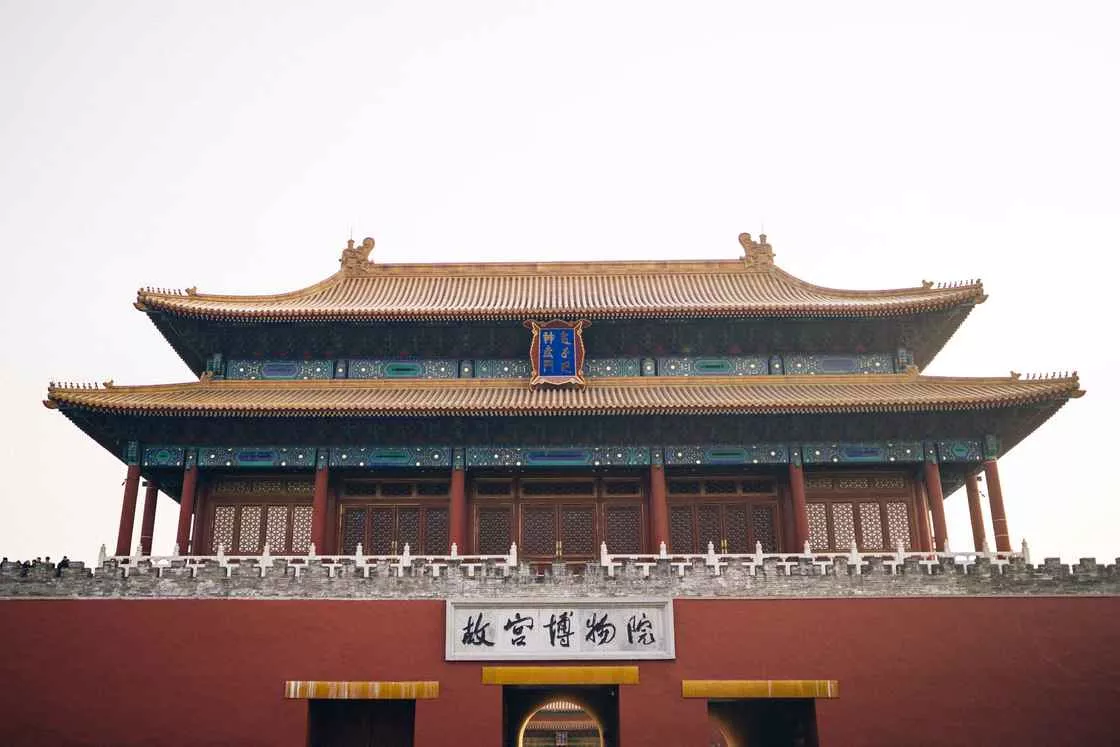 Palace MuseumThe Palace first snow tickets are extremely difficult to buy, if it is already glimpsed in the sky drifts of snow, often this time then go to buy tickets have been sold out; but If you buy based on the weather forecast, the odds are that you'll also have a hard time coming across a really big snowfall. For someone who lives in Beijing, it's really all about luck and fate for tourists. But luckily we still have the Forbidden City photographer who was able to share the snowy scenery of the Forbidden City to the whole country in the first place.
Palace MuseumThe Palace first snow tickets are extremely difficult to buy, if it is already glimpsed in the sky drifts of snow, often this time then go to buy tickets have been sold out; but If you buy based on the weather forecast, the odds are that you'll also have a hard time coming across a really big snowfall. For someone who lives in Beijing, it's really all about luck and fate for tourists. But luckily we still have the Forbidden City photographer who was able to share the snowy scenery of the Forbidden City to the whole country in the first place.
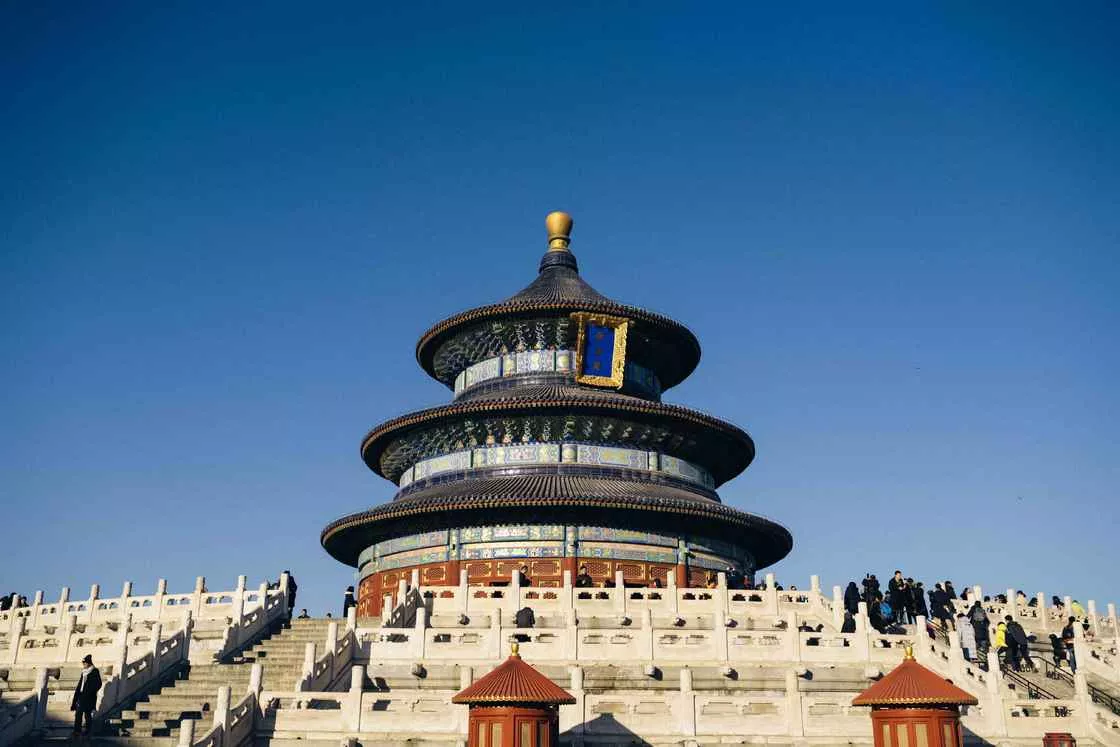 Beijing Temple of HeavenThe Temple of Heaven is located in the southern part of the central axis and was the place where the emperors of the Ming and Qing dynasties worshipped the Yellow Sky and Qi Wu Gu Deng. The Temple of Heaven is also one of the most visited ancient complexes I've ever been to, and the reason is, if you use a restaurant as a metaphor, the Temple of Heaven is like a small restaurant near home that is convenient to go to, no effort to order food, the taste is good, you can go to eat anytime, the speed of food is also fast, you can go without a plan to go. The Forbidden City, on the other hand, is like a big hotel, I'm afraid it's the kind of place where you need to treat yourself to a big table of dishes for a few hours, you need to buy tickets in advance, set a plan, and it's a great test of physical strength.
Beijing Temple of HeavenThe Temple of Heaven is located in the southern part of the central axis and was the place where the emperors of the Ming and Qing dynasties worshipped the Yellow Sky and Qi Wu Gu Deng. The Temple of Heaven is also one of the most visited ancient complexes I've ever been to, and the reason is, if you use a restaurant as a metaphor, the Temple of Heaven is like a small restaurant near home that is convenient to go to, no effort to order food, the taste is good, you can go to eat anytime, the speed of food is also fast, you can go without a plan to go. The Forbidden City, on the other hand, is like a big hotel, I'm afraid it's the kind of place where you need to treat yourself to a big table of dishes for a few hours, you need to buy tickets in advance, set a plan, and it's a great test of physical strength.
Unlike the Forbidden City, whose full name is "Palace Museum", the full name of the Temple of Heaven is "Temple of Heaven Park", which means that it is essentially a park. You can't get close enough to see the Temple of Prayer in the photo above without buying a ticket, but you can still enjoy the part of the Temple of Prayer outside the Temple of Prayer that is a park. I once visited the Temple of Heaven at night and found the courtyard dark but lively, with residents running, walking and chatting around the area, and I thought to myself, this is just like a normal civic park. Then I thought, "No, it's not. Without all the royal intentions of the past, the Temple of Heaven is now just an ordinary and beautiful building, and it is its historical mission to let the public move around in the park.
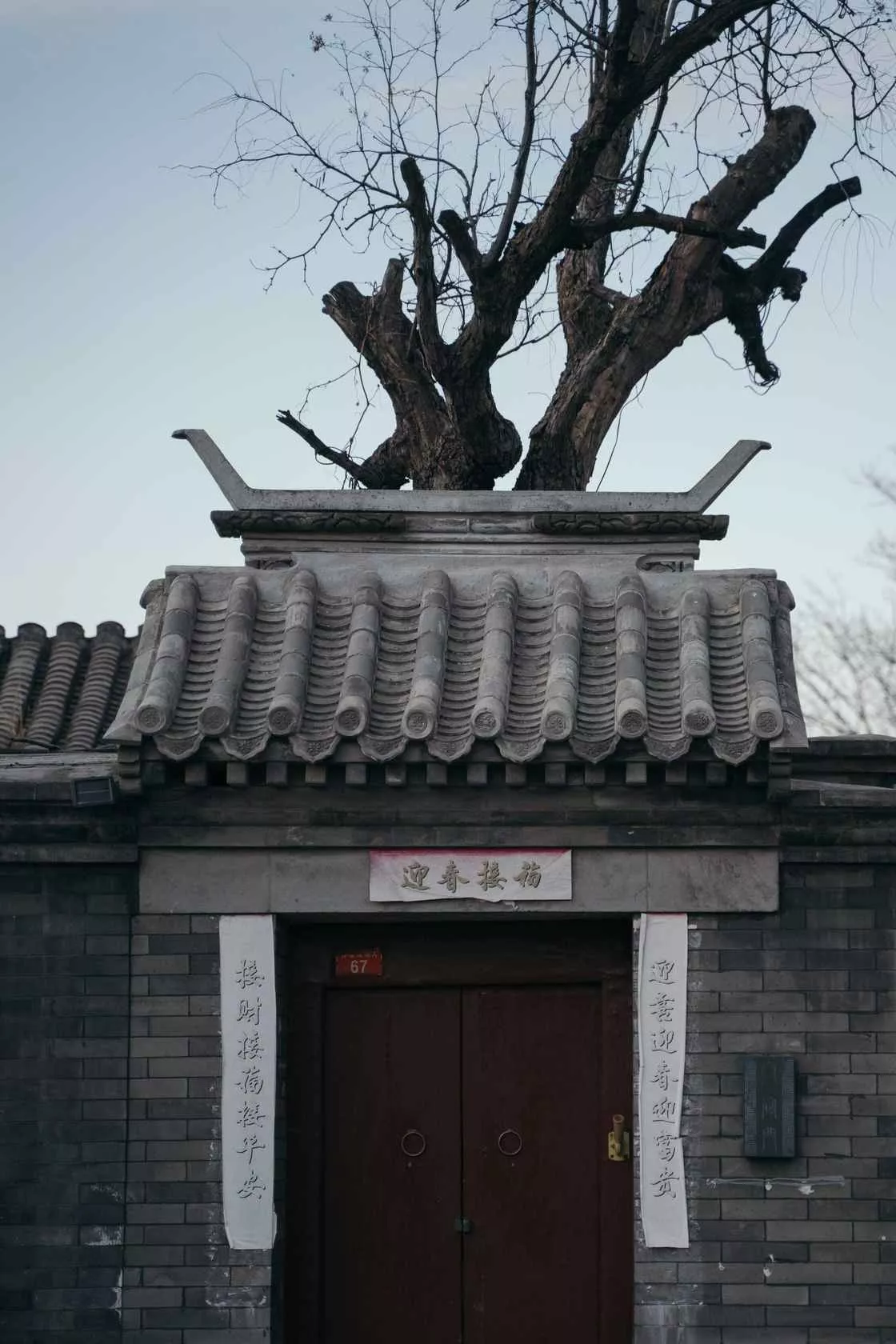 minimalist doors
minimalist doors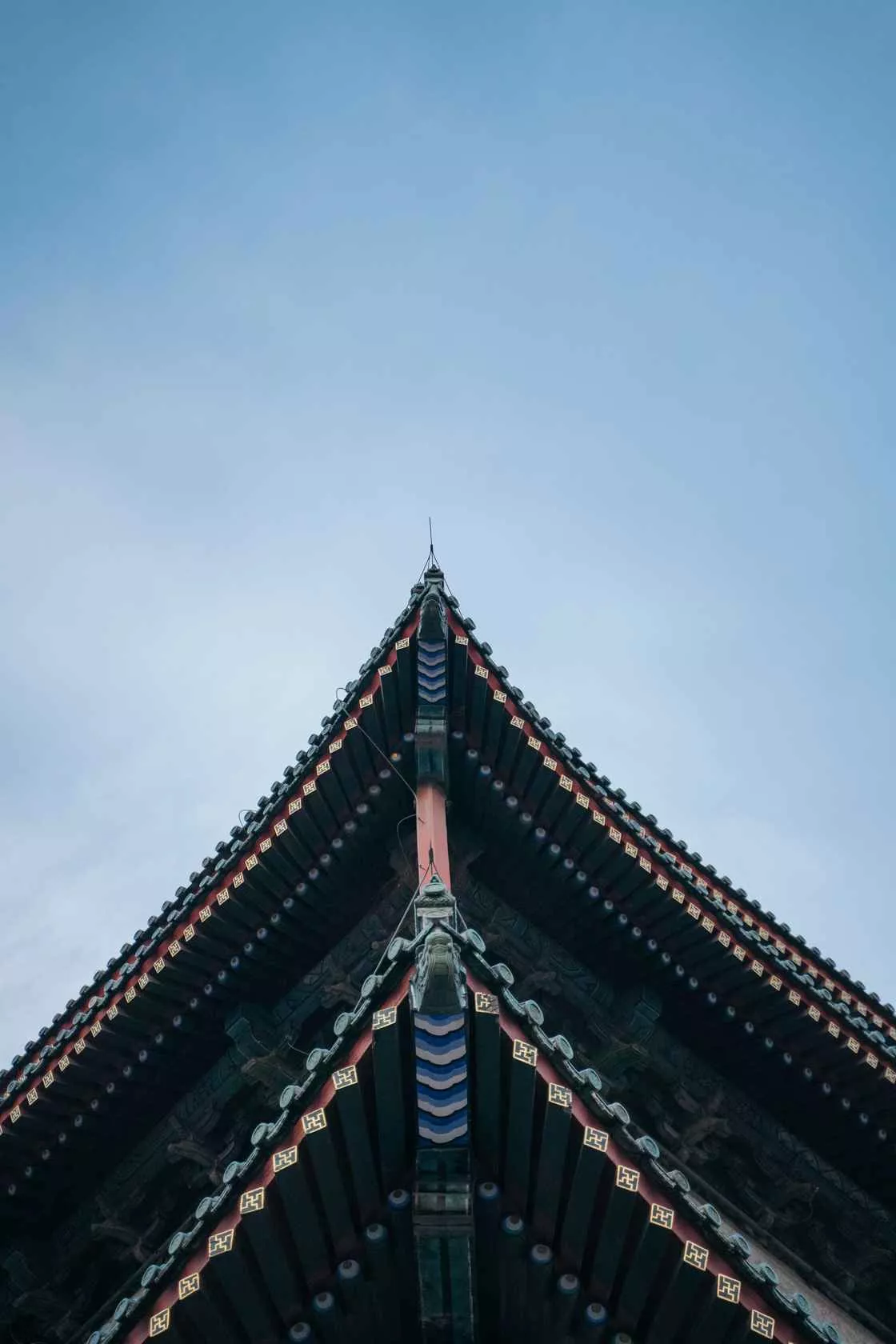 Minimalist Roof says at the end
Minimalist Roof says at the end
I've always liked cities that have a more 'punchy' feel to them, where there is a mix of the old and the new, a mix of cultures. In fact, many cities have gradually developed into this, such as Berlin and Guangzhou, which I have visited. This is a very beautiful side of history that has been revealed to us. Of course, when you go to every city, there may be a Starbucks, a fancy mall, a towering building, but it's not what really makes the city what it is, at least not yet. What makes a city warm should be the history of the city, the things that can be left behind by time.
I hope you will also take some time out of your busy day to visit the hutongs, see the imperial city, slow down your pace for a walk in the pulse of this old city, and feel the ancient yet vibrant pulse.